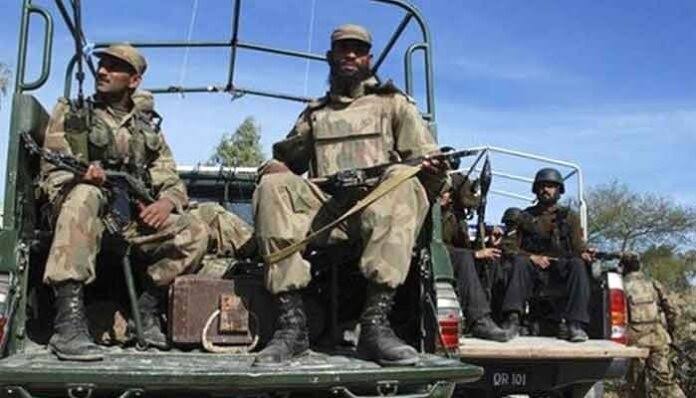By: Yousuf Nazar
The IMF said Friday that “while the new government has indicated its intention to continue the policies, political uncertainty remains significant. A resurgence in social tensions (reflecting the complex political scene and high cost of living) could weigh on policy and reform implementation.”
What actions does the government take in the next few weeks will be crucial. It must move swiftly and decisively to reduce political uncertainty.
In a letter to The New York Times, published on September 8, 1986, I wrote:
“If Pakistan is to break the debilitating cycle of military intervention, reform, failure, demoralization, and breakdown, it will have to take the slow but steady route of democracy under a viable constitution and a genuine federation.”
It turned out to be just wishful thinking. Despite periodic elections, Pakistan’s political landscape has veered away from democracy towards authoritarianism, a reality that cannot be obscured by mere electoral rituals. Even respected leaders like Benazir Bhutto opted for compromise over genuine democratic reform, leading the nation down a slippery slope. Today, Pakistan is described as having an authoritarian form of government. Just holding elections does not make a country democratic. Ask anyone familiar with Mexico’s history since the Mexican Revolution of 1919-20.
In a recently published article, “Pakistan’s Crisis of Competence,” I advocated for a government of experts under an emergency rule for 10 years. It was a particularly sad moment for a former political activist of the Movement for the Restoration of Democracy (MRD) in the 1980s. The reason was simple: we already have an authoritarian form of government, but the risk of state failure is high if we continue to let a group of incompetent politicians and bureaucrats, in collaboration with wealthy and rent-seeking elites, run a country that is one of the worst-governed in the world.
This proposal may seem controversial, but it finds precedent in successful technocratic interventions elsewhere, such as the “Berkeley Boys” in Indonesia under Suharto’s regime. The “Berkeley Boys” (or “Mafia,” as some called it) was the term given to a group of University of California- trained economists in Indonesia who were given technocratic positions under the Suharto dictatorship during the late 1960safter the civil war in 1965-66. In 1966, they advised Suharto to launch a program aimed at stabilizing and rehabilitating Indonesia’s economy. The programme was extremely successful in a country with 38 provinces, and numerous ethnic, cultural and linguistic groups. Inflation fell from 650% in 1966 to only 13% in 1969. Their programme led to a period of record growth for the Indonesian economy, averaging around 6.5% per year between the late 1960s and 1997 when the entire region was hit by the severe Asian financial crisis.
The recent cyclical recovery in some key economic indicators seems to have created an illusion that Pakistan is out of the woods, and that only if the political parties and the establishment could work out a modus vivendi, Pakistan can find its way forward. The public discourse in the mainstream media seems to suffer from Ostrich syndrome, but optics and headlines cannot change reality.
Pakistan’s current account deficit has indeed improved in recent months, but so it did for a short while under the PTI government when it recorded a surplus of $424 million in July 2020. However, there is little that suggests a change in the overall trend.
The country avoided default but has done little to reform the economy other than controlling imports and delaying payments to foreign creditors. Pakistan owes $2b to just the Chinese power generation companies, in addition to $8bn in short-term deposits and swap facilities extended by China to the State Bank of Pakistan. Pakistan owes $7.5b to the IMF alone over the next 5 years. The next IMF loan will be used to repay the existing loans. It is unlikely that the IMF would grant a larger loan to Pakistan.
Pakistan faces two ticking time bombs: debt and demographics. Pakistan’s two-thirds of the population are 29 years old or younger, with a median age of 19. Nearly 50% of the population is functionally illiterate, and most of the rest are poorly educated and susceptible to religious extremism. Unfortunately, sad but true. 40% of people are living below the poverty line. 26 million children are out of school. With 20% inflation, people are forced to borrow to pay the bills. Pakistan’s inflation rate has been among the five highest across the world’s major economies for as many years.
The combustible combination of worrisome demographics, economic stress, religious extremism, ethnic tensions and extreme intra-regional income inequality requires immediate course correction. On the foreign policy front, the country is squeezed between China (its single largest creditor) and the West in a global order that is still dominated by the latter. Pakistan can no longer play the geo-strategic location card because it must deal with terrorism and insurgency within its borders.
PM directs to use technology for making wheat procurement process transparent
Pakistan’s military establishment has predominantly ruled through hybrid arrangements since 1988, frequently by co-opting or grooming handpicked politicians. Three decades were squandered as past establishments deemed it expedient to work with mediocre, incompetent, and corrupt politicians. The establishment must now rectify its course and address the damage, as realistically, no other entity is capable of doing so. However, this corrective action must be undertaken with the understanding that effective solutions require political and economic measures, with the use of state coercion as a last, rather than first, resort in issue resolution.
Development and Democracy
It is a cruel joke on ordinary citizens to be told that the emergence of a democratic order takes an extensive amount of time, possibly even decades before it can bring them relief on the economic front and pave the way for progress in their living standards.
“A second school, institutional economics, argues: that good, modern institutions are necessary for economic prosperity. But this school of thought cannot explain how a poor society that lacks capacity can quickly establish the ideal institutions needed for growth. In reality, decades of best-practice reforms led by international institutions to make poor countries “skip straight to Weber” have proven disappointing and even backfired. As Lant Pritchett and Michael Woolcock lament, it has been “a root cause of the deep problems encountered by developing countries.”
According to Stefan Dercon, one of the world’s most prominent development economists and a professor at the University of Oxford, it is hard to find strong evidence that either autocracy or democracy is best for developing countries.
Even Acemoglu and Robinson (Economic Origins of Dictatorship and Democracy) accept that “for those who expect democracy to transform society in the same way as British democracy did in the first half of the twentieth century, it may be a disappointing form of democracy.”
The question of whether democracy encourages or retards development is part of a false distinction. Democracy and institutional development are part of the development and so are not to be judged as drivers of it.
Less than 8% of the world’s population live in a full democracy, while almost 40% live under authoritarian rule—a share that has been creeping up in recent years, according to the Economist.
The established or conventional wisdom in Pakistan is that democracy is the only way forward for development, and had it not been for the periodic interventions of the establishment and if democracy had been allowed to function, Pakistan’s history would have been different. Perhaps it could have been, but present-day Pakistan is an exceptional case of governance if not state, failure. We cannot rely on prescriptions offered by conventional thinking because that mostly relies on old mantras while the country sinks deeper into the debt quagmire.
Governance Models in Developing Countries
The historical performance of governance models across the developing world offers valuable insights. While conventional wisdom extols democracy as a panacea for development, empirical evidence suggests a more nuanced reality. Neither autocracy nor democracy guarantees economic prosperity, as evidenced by divergent trajectories in East Asia and Latin America. Moreover, stability has often been achieved through hybrid or authoritarian regimes, challenging simplistic narratives, sometimes bordering on naivety, of democratic determinism.
Pakistan’s trajectory mirrors this complexity, with periods of democratic experimentation yielding mixed results. The recent comparison with countries like Argentina, South Africa, and Nigeria underscores the perils of democratic stagnation and institutional frailty. As such, Pakistan must heed the lessons of its Asian peers and chart a pragmatic course that prioritizes governance efficacy over ideological dogma.
Exceptions apart, relative stability in the developing world historically came through:
(a) Established monarchies or kingdoms (e.g. Saudi Arabia, Gulf Kingdoms, Thailand)
(b) Hybrid or Authoritarian governments (e.g. South Korea, Indonesia, Taiwan, Malaysia)
(c) Socialist revolutions (eg China, Vietnam)
(d) Flawed democracies (eg Brazil, Mexico, India).
Wherever coup d’états became the order of the day, the countries experienced chaos, including secession or civil wars (eg Iraq, Sudan). Pakistan experienced not just coup d’états (1958, 1969, and 1999) but also saw great variations in policies with the change of command in the top army leadership, particularly since 1988. Authoritarian rule in Pakistan was largely personalised and its modus operandi was driven by political expediency with little regard for institution-building or governance reforms.
There is not a single full democracy from Asia to Africa to Latin America with the sole exception of South Korea. However, South Korea transitioned to democracy in 1997, and President Park (1961- 1979) is widely credited with dramatically increasing the literacy rate and laying the foundation of a modern industrial Korea. The country was under military dictatorship between 1979 and 1988. However, South Korea is not as ethnically diverse as Pakistan, India, Nigeria, Indonesia, or Ethiopia. It has a population of 51 million, of which roughly half live in the Seoul Capital Area.
Economic Growth – Authoritarian/Hybrid
Governments vs Democracies Twenty-nine largest countries by population, each with a population of 50 million or more, have a combined population of 6 billion and account for about 80% of the world’s population. According to the democracy index of the Economist Intelligence Unit, 15 of these countries have authoritarian or hybrid political systems, 8 have flawed democracies, and only 6 are full democracies. The EIU downgraded the United States to a flawed democracy, but I have classified it as a full democracy for this analysis.
An analysis of annual average growth rates in these countries’ real per capita incomes offers some food for thought. This GDP per capita indicator provides information on economic growth and income levels relative to the population in the long run. This data is adjusted for inflation and differences in the cost of living between countries and is therefore a critical measure of economic progress.
Authoritarian or hybrid regimes grew at the fastest average rate of 2.83% (2.44% excluding China) during the three decades from 1991 to 2022. Flawed democracies grew at an annual rate of 2.19%, and full democracies at the rate of just 1.62%, as summarized in the table.
It is understandable if the high-income democracies (United States, United Kingdom, Germany, France, Japan, & Italy) grew at an average rate of 1.16%. However, among the developing world countries, all those countries whose growth rate was above the average were in Asia or East Asia except Turkey and Ethiopia. Turkey and Ethiopia have suffered from economic crises and needed IMF loans notwithstanding their growth rates.
Growth Rates: East Asia vs Latin America
During the period of three decades from 1991 to 2022, the real per capita income of the developing countries in East Asia and the Pacific (excluding those of high-income countries like Japan and Australia) more than tripled and grew at an annual average of 6.2% and median of 3.8%, which is more than triple the growth rates in Africa or Latin America.
Developing countries in Latin America and Africa grew their per capita incomes at a much smaller rate of around 1.2% and 0.9% respectively. The real income growth rates of both Mexico and Brazil, the two largest Latin American countries, have lagged behind most of the countries in East Asia.
India is cited as an example of a developing country democracy that has delivered above-average economic growth but other large (flawed) democracies have struggled to grow. India is an exception rather than a typical large developing country.
Brazil completed a transition to democracy in the 1980s and has had regular elections since then. Its real per capita average annual growth rate was just 1.23% during the last three decades, despite being endowed with abundant natural resources in sharp contrast to many East Asian countries.
Mexico’s growth rate was even worse, 0.68% – near the bottom of this group. For much of the 20th century, Mexico operated as a hegemonic- party autocracy with the Institutional Revolutionary Party (PRI) at the helm. Since 2000, Mexico has been a functioning democracy. Despite having the 15th largest economy in the world and being the 11th largest oil producer in the world, 46% of Mexicans live below the poverty line.
Brazil, Mexico and Colombia are also among the top 20 Countries with the highest income inequality, measured in terms of Gini coefficients based on the World Bank data. Higher coefficients signify greater inequality as shown in the map.
Argentina experienced significant political turmoil and democratic reversals in the 20th century. Following a transition that began in 1983, democracy in Argentina was reestablished. In 2023 it was described as the second most electoral democratic country in Latin America. It is also the largest borrower of the IMF. The country has been mired in an economic crisis of immense proportions, sparking political chaos, social strife, and a world-record default on some $100bn of debt.
Nigeria has struggled to find stability for a long time due to a host of factors. It is a multi-ethnic and multi-state country and a federal republic modelled after the United States, with 36 states. It returned to democratic rule in 1999 after having suffered from multiple military dictatorships since its independence in 1960. It is the most populous country (230 million people) in Africa and the world’s sixth-most populous country. The country’s recent history has a few striking similarities with Pakistan’s. Its real per capita income grew at an annual average of just 1.4% during the three decades to 2022 due, in part, to its economy’s heavy dependence on oil and chronic political instability.
South Africa, with a population of 62 million, is a country mired in social and economic turmoil and cited as a case of state failure with the highest level of income equality in the world. After the collapse of the apartheid regime in 1994, many thought that the nation would embark on an era of sustained prosperity, but this hope failed to materialize. Since 1994, all ethnic and linguistic groups have held political representation in the country’s liberal democracy, which comprises a parliamentary republic and nine provinces. The official unemployment rate of 32% is the highest in the world. More than 16 million South Africans – 25% of the country – rely on monthly welfare grants for survival. Twenty-five thousand people are killed annually, thus making South Africa one of the most violent countries on earth.
Growth Rates: Pakistan vs East Asia & the Middle East
Since major countries in East and Southeast Asia have done so well, experiencing both relative political stability and economic development for decades, compared to other regions, the success stories in the region deserve closer examination.
The data about nuclear armed North Korea is not available but since the founding of the nation, the country’s supreme leadership has stayed within the Kim family. North Korea functions as a highly centralized, one-party totalitarian dictatorship. Its economy is in terrible shape and largely relies on the production of coal, concrete and industrial plastics, and has been kept afloat by food, fuel and fertiliser from neighbouring China, its biggest trading partner.
The table presents the annual growth rates (of real per capita incomes) of 19 major countries from East & Southeast Asia and the Middle East for 29 years from 1993 to 2022. It also shows the form of government (per the democracy index of the Economist) and the state religion.
Authoritarian or hybrid regimes with generally secular societies grew faster. From Asia to the Middle East, countries with Islam as the state religion and ruled by authoritarian governments reported the slowest economic progress during the 29 years from 1993 to 2022. Pakistan, Iran, and Saudi Arabia are at the bottom of the table. These three countries are classified as authoritarian with Islam as the state religion.
East Asian countries with authoritarian and secular systems vastly outperformed these three countries. The shockingly low growth rates of Saudi Arabia and Iran, despite their vast oil reserves, call for serious introspection about their forms of government, ideologies, and policies.
Bangladesh, despite its flawed or hybrid system, decided to follow a secular route and has made progress. The textile industry is vital to Bangladesh’s economy, accounting for 85% of all export revenue. The industry employs about 4 million workers, 80% of whom are women. In the past, women in Bangladesh were hardly allowed to go outside the homestead and participate in economic activities due to traditional societal norms Pakistan experienced the third lowest growth rate and is also the third poorest country in this group (measured by real per capita income). Myanmar, the poorest country in the group, seems an outlier as its growth rate is from a tiny base.
However, if it is any consolation, Pakistan has done better than some of the countries like Argentina, South Africa, and Nigeria. “Democracy” seems to have failed the people in each of these countries, although it is not the only reason for their failures.
Conclusion
Pakistan must not become an Argentina, South Africa, Myanmar, North Korea, or Iran. Its elites must avoid the mistakes these countries made. Pakistan stands at a critical juncture, confronted by multifaceted challenges that demand bold and pragmatic solutions. The temptation to bury our heads in the sand, oblivious to the harsh realities, must be resisted. It is not advisable to dismiss the successful stories in many East and Southeast Asian countries.
We need to come out of the Ostrich syndrome and foster a culture of informed debate to steer clear of the pitfalls that have plagued many larger countries in Africa and Latin America. While there’s no one-size-fits-all solution for development, without engaging in a thorough and enlightened discourse on the barriers holding Pakistan back from realizing its potential, there is a growing risk that it will not be able to find its way forward. In today’s world, driven predominantly by knowledge capital, the imperative for introspection is all the more critical.
Yousuf Nazar
–The writer is former head of Citigroup’s emerging markets investments, and was responsible for managing investments and macro- economic strategy across 40 countries in the emerging markets, covering Asia, Latin America, Eastern Europe, the Middle East and Africa. He is the author of ‘The Gathering Storm: Pakistan’s Political Economy of a Security State.’



